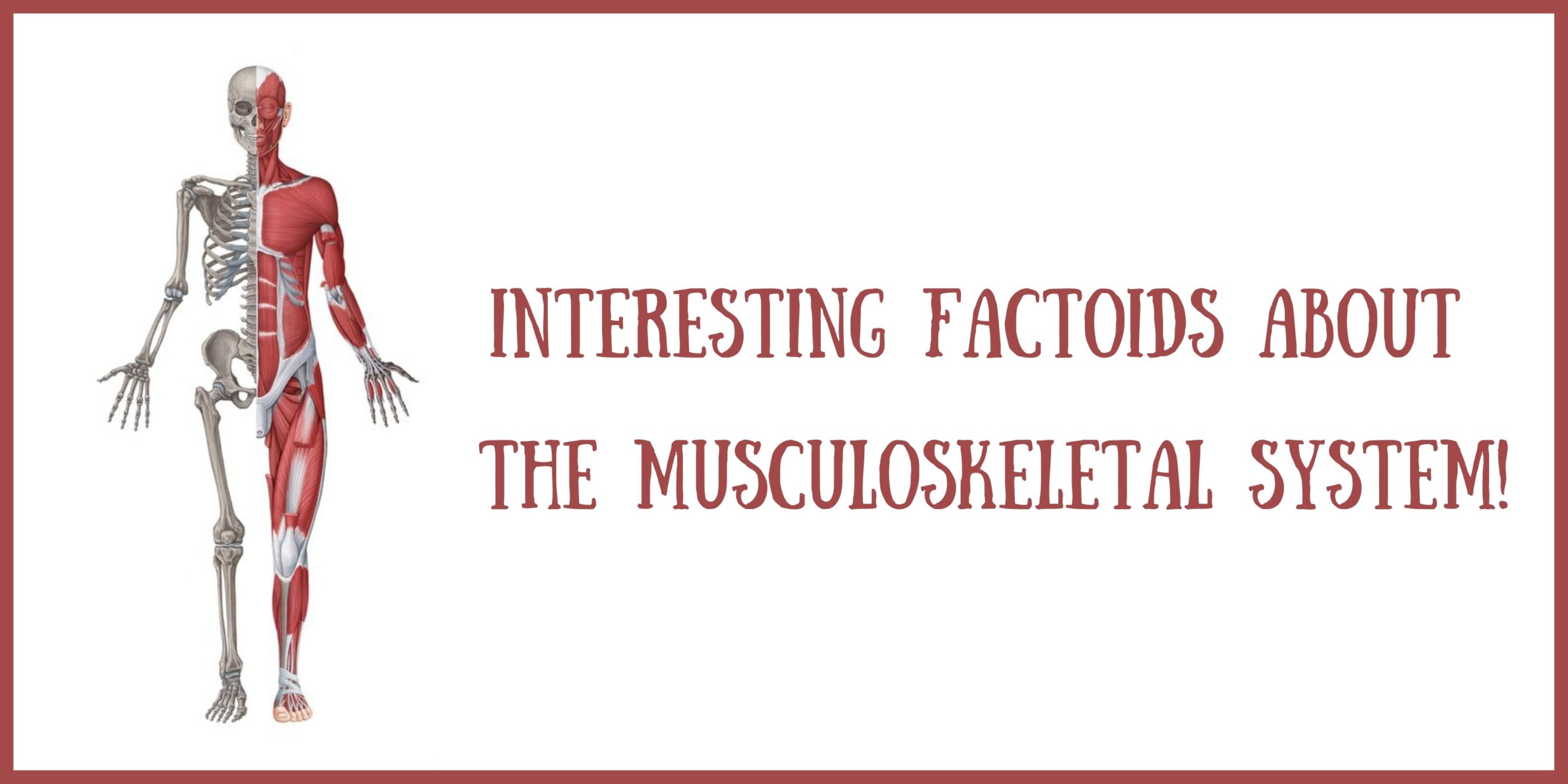
Interesting factoids I bet you never knew about the Musculoskeletal system
The functions of the musculoskeletal system, along with its parts and disorders, are expounded in this article. The musculoskeletal system, often known as the locomotor system, is a component of the human body that provides mobility, balance, shaping, and reinforcement. Adult bodies are composed of 206 bones and over 600 muscles linked up by ligaments, tendons, and soft tissues. The musculoskeletal system is separated into two broad classification systems: The muscular system is a system in the human body that encompasses all of the body’s muscle types. Skeletal muscles, specifically, are responsible for movement via acting on the body’s joints, and the muscular system also comprises tendons that unite the muscles to the bones. The skeletal system is the other sort of system that is composed primarily of bone. Bones articulate with one another and form joints, forming a rigid yet mobile skeleton for our bodies. The accessory parts of the skeletal system, articular cartilage, ligaments, and bursae, support the integrity and functionality of the bones and joints. The liver performs a wide range of biological functions. A study demonstrates that when the liver produces fat via lipogenesis, an indication is transmitted as a signal to skeletal muscle cells instructing them to burn fat via fatty acid oxidation.
Parts of the musculoskeletal system
Muscles, ligaments, tendons, bones, and delicate tissues comprise your musculoskeletal system, and they cooperate to support your body’s weight and aid in movement. Safeguarding interior organs is one of the functions of the musculoskeletal system. Bones are made up of a range of shapes and sizes that support your body, protect tissues and organs, store calcium and fat, and produce blood cells. A spongy centre surrounds the hard outer shell of a bone. Bones give your body structure and shape. They assist in movement by collaborating with muscles, tendons, ligaments, and other connecter tissues. Cartilage is a form of connective tissue that cushions and secures the bones in your joints, spine, and ribs. Cartilage is a firm, rubbery substance that keeps your bones from rubbing together. A joint is formed when two bones contact, and cartilage is present in the nose, the ear, the pelvis, and the lungs. The ball-and-socket shoulder joint, for example, has an extensive range of motion. Other joints, such as the knee, allow the bones to move back and forth but not rotate. Thousands of stretchable fibres make up a muscle’s structure. Thanks to your muscles, you can move, sit erect, and keep a steady position. Running, dancing, and lifting need the use of specific muscles. With the help of others, you write your name, secure a button, talk, and swallow. Ligaments are dense collagen strands that unite bones and aid in stabilising joints, and tendons are connective tissue bands that connect muscles and bones. Tendons are made up of fibrous tissue and collagen and are sturdy but not highly elastic. The development of strong, healthy bones is one of the benefits of fat-soluble vitamin A.
The functions of the musculoskeletal system
The functions of the musculoskeletal system comprise body support and movement facilitation. Skeletal muscles exert tension on the bones, resulting in joint movement. Face expressions are created by skeletal muscles pulling on the delicate tissues of the face, while respiratory muscles create a movement that facilitates breathing. Body wall muscles support the inner parts of the abdominal cavity, and when these muscles lose strength, the interior parts of the abdominal cavity might expand outwardly, as observed in certain people as they grow older. Some of the skeletal muscles, especially those on the body wall, help protect the body’s inner organs inside the abdomen from the force applied to the outside of the body. Shivering is a muscular system activity that produces heat in order to rewarm an excessively cooled body. Heat is a leftover by-product of muscular metabolism that contributes to maintaining the body’s internal temperature at 98.6 degrees Fahrenheit. The musculoskeletal system assists you in standing, sitting, walking, running, and moving. Vitamin D deficiency symptoms can be caused by a disturbance in any section of the vitamin D physiological route, resulting in bone discomfort, muscle weakness, falls, poor bone mass, and fractures.
Disorders of the musculoskeletal system
Injuries, disease, and ageing can all result in pain, stiffness, and other movement and function issues in the musculoskeletal system. However, maintaining a healthy musculoskeletal system begins with the ability to manage your overall health. The functions of the musculoskeletal system entail the storage and release of nutrients as well as fat. Various musculoskeletal illnesses exist and can affect your movements, speech, and interactions with the world. Some of the most prevalent causes of musculoskeletal pain and mobility difficulties include Bones losing density as they age, Arthritis causing joint discomfort, inflammation, and stiffness. Back pain and muscle spasms can be caused by muscle strains or disc damage, and bone cancer is one of the various musculoskeletal disorders. Congenital anomalies can affect the body’s appearance, structure, and function. Diseases influence bone, muscle, and connective tissue function in many ways. Bones erode and perish due to disorders like osteonecrosis. An injury to bones, cartilage, muscles or connective tissues is possible. Carpal tunnel syndrome, bursitis, and tendinitis are overuse ailments. Accidents and trauma can cause sprains, muscle rips, broken bones, and soft tissue injury. To maintain strong bones and muscles, you should: attend routine check-ups and age-appropriate health screenings, give up smoking and abstain from tobacco, make nutritious food selections, keep a healthy weight, get ample sleep and engage in frequent physical activity.